On October 3, 2009, over 300 Taliban fighters launched a coordinated assault on the U.S. Army’s Combat Outpost (COP) Keating in Kamdesh, Afghanistan. The approximately 50 soldiers of Black Knight Troop (3-61 Cavalry Regiment, 4th Brigade Combat Team, 4th Infantry Division) stationed at the outpost were vastly outnumbered and confronted overwhelming challenges. Despite their brave stand, the battle took a heavy toll: eight soldiers were killed, and 22 were wounded.
Kamdesh wasn’t a good location for a combat outpost
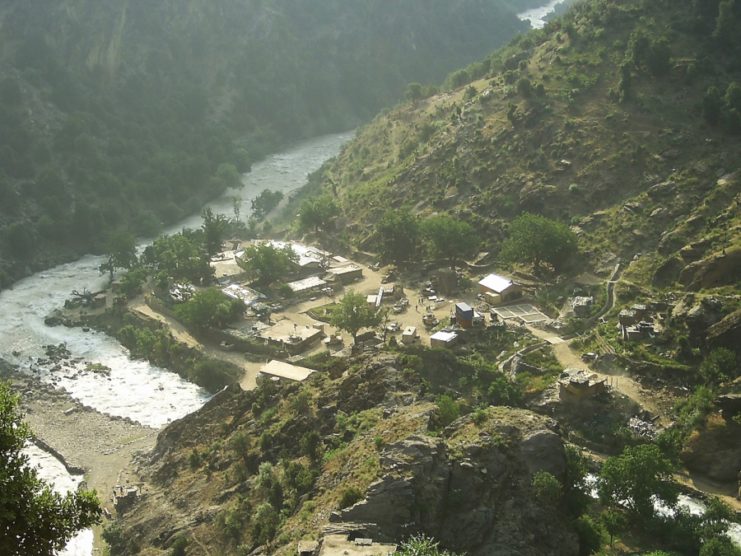
Combat Outpost (COP) Keating was established in 2006 in Afghanistan’s Nuristan province, within the Landai Sin Valley. Most soldiers arriving there considered it a poor location for a base, as the valley was overlooked by towering mountains that exposed COP Keating to attacks from above. The rough, nearby road used by Afghan forces meant resupply missions had to take place at night via helicopter.
Despite these challenges, COP Keating’s location was strategically chosen for its proximity to the Pakistani border. The area was crucial for anti-coalition forces who relied on supply routes through Pakistan, and it was hoped that positioning allied troops in Kamdesh—where three valley systems converged at the border—could disrupt the flow of weapons and fighters from across the border.
One primary mission of the base was to foster relationships with local residents through improvement projects as a counterinsurgency effort, yet Taliban forces continued to traverse the area. By 2009, three years after opening, COP Keating was ultimately judged ineffective due to its weak defenses and limited strategic value, leading to a scheduled closure in August 2009.
Since its opening, COP Keating had regularly faced sniper and mortar attacks, but these escalated significantly in 2009, with 212 incidents reported in the first nine months alone. To compound matters, delays in its closure arose from inadequate transportation and rising tensions between U.S. President Barack Obama and Afghan President Hamid Karzai. This left the Black Knight Troop in an increasingly exposed position, making disaster nearly certain.
Battle of Kamdesh, minute by minute
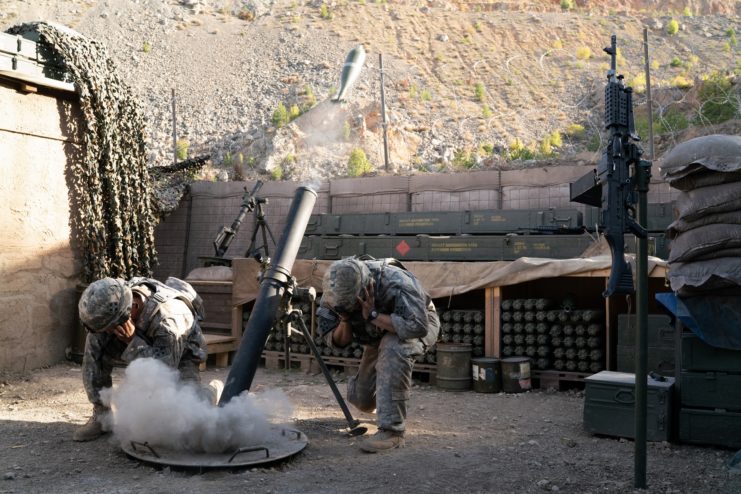
At around 3:00 AM on October 3, 2009, 300 Taliban-backed insurgents arrived in Kamdesh and asked that locals evacuate. After they finished their morning prayers, they opened fire on COP Keating with Soviet-era B-10 recoilless rifles, DShK heavy machine guns, rocket-propelled grenades (RPGs) and mortar fire.
The insurgents had extensive knowledge of the base’s layout and weaponry, and they first targeted its most powerful weapon: the 120 mm mortar. As fighters descended upon COP Keating, others targeted nearby Observation Post Fritsche. At 6:03 AM, the post sent out an urgent message, “FRITSCHE AND KEATING IN HEAVY CONTACT.”
Within two minutes, the first US soldier was killed; Pfc. Kevin Thomson was shot in the face while defending the northernmost mortar pit. Not long after, Sgt. Josh Kirk was struck by RPG shrapnel while preparing to fire an AT4 anti-tank rocket. This was followed by a sniper’s bullet to the head.
The US troops tried to return fire from armored Humvees equipped with machine guns, but were overwhelmed as their ammunition ran low. Sgt. Vernon Martin was struck by a bullet and, shortly after, an RPG knocked a .50 caliber machine gun off its mount, spraying shrapnel and inflicting him with additional injuries.
Martin and another soldier were near a Humvee when they were joined by Sgt. Justin Gallegos and Spc. Stephen Mace. The four got into the vehicle as Spc. Ty Carter ran through a barrage of bullets with ammunition for the Humvee’s M240 machine gun, which was no longer operational. Without any way of fending off the ensuing Taliban forces, COP Keating was left even more vulnerable.
Spc. Michael Scusa was killed by a bullet to the neck while running from the barracks to defend another position. Hoping to cover the men trapped in the Humvee, Staff Sgt. Clinton Romesha began firing his M48 machine gun at the enemy, but was injured by the overwhelming gunfire.
Afghani guards fled as the fighting intensified
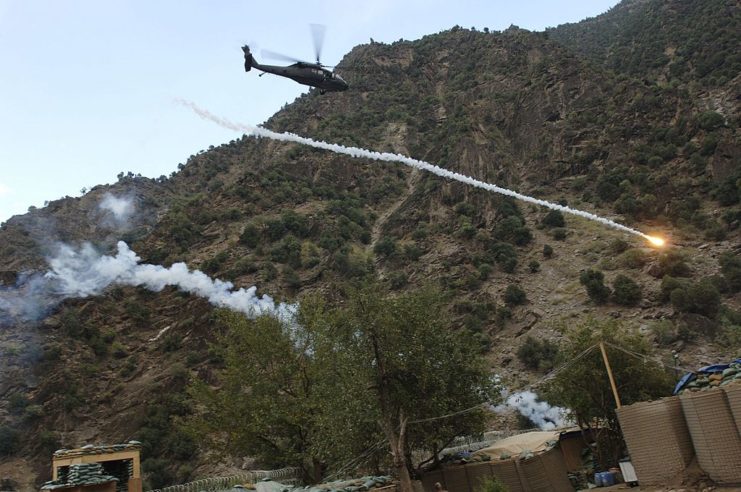
Forty-eight minutes after the Battle of Kamdesh began, the Taliban had breached the perimeter defenses of COP Keating. Afghan National Army soldiers, assigned to guard positions around the base, were urged to hold their ground but ultimately fled as the intensity of the fight grew. American soldiers reported that none of the Afghan troops remained; instead, they chose to run, hide, or take equipment and supplies from the base during and after the assault.
The Taliban infiltrated the base, setting its primary buildings ablaze. An hour into the battle, the defenders of COP Keating pulled back to protect two buildings as more of the base fell to the enemy. With more fighters pouring in, the remaining U.S. troops recognized the growing risk of being overrun. Lt. Andrew Bundermann ordered a contraction of the perimeter and a concentration of their firepower. However, Romesha gave one last rallying cry, urging the men to “retake this ******* camp and drive the ******* Taliban out!”
The small group then began coordinating two counterattacks. Sfc. Jonathan Hill agreed to lead his men to the east side, while Romesha rallied others to join him in the west to reclaim both the ammunition storage shed and the main entrance to the base. As they set their plan in motion, Boeing AH-64 Apaches arrived, targeting Taliban positions along the mountainside.
A final attempt to take back control of Combat Outpost Keating
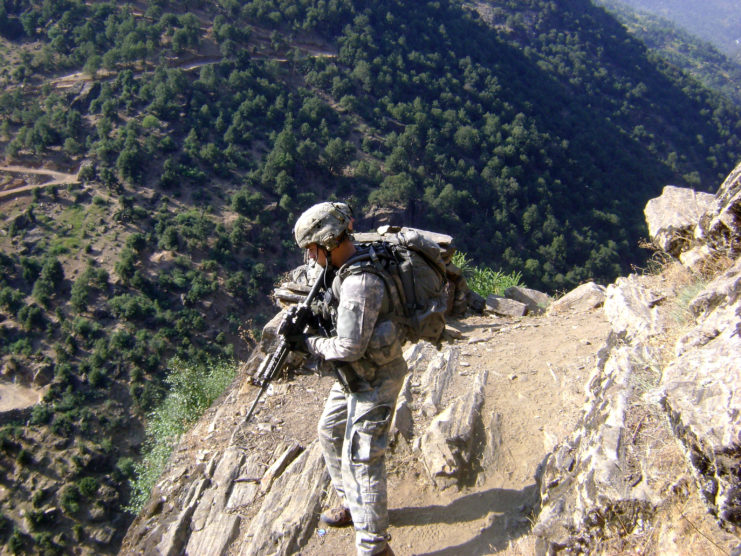
Romesha motivated his men with the words, “We’re taking this b***h back,” as they advanced toward the ammunition storage shed. They gathered grenades and directed their attack on the Shura building, a mosque occupied by Taliban fighters. Despite being heavily outnumbered by hundreds of insurgents, the eight soldiers successfully cleared the area, secured the dining hall, and fortified the entrance to COP Keating.
While American air strikes offered essential support, a new threat emerged as a burning tree endangered the aid station where wounded soldiers were sheltered. Acting swiftly, the remaining fighters used a chainsaw to bring down the tree before it could cause further harm. By 12:30 PM, most of the Taliban fighters had retreated, conceding defeat.
The 1-32 Infantry Quick Reaction Force (QRF) arrived to eliminate the remaining insurgents, resulting in 150 enemy fighters killed during the battle. By 7:00 PM, COP Keating was secured. Eight American soldiers lost their lives, and 22 were wounded.
In the days that followed, the remaining troops were evacuated, and the base was destroyed by a Rockwell B-1 Lancer.
Reliving what happened during the Battle of Kamdesh
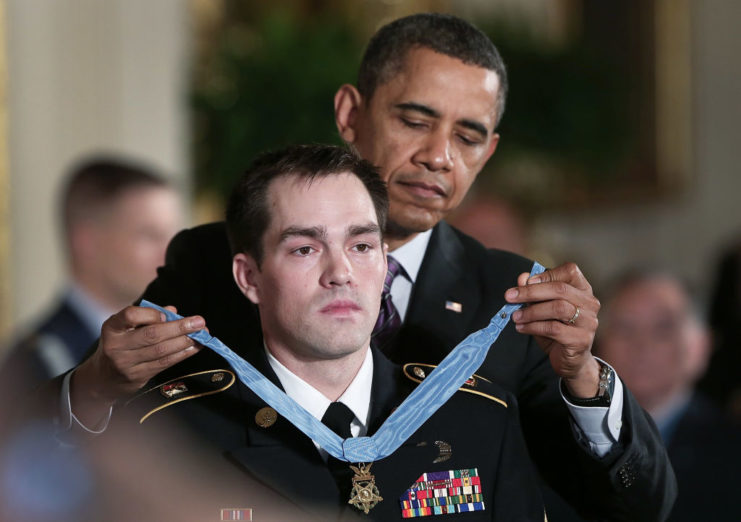
In 2013, Romesha and Carter received the Medal of Honor for their courage, bravery and leadership during the Battle of Kamdesh. Additionally, 27 Purple Hearts, nine Silver Stars, 37 Army Commendation Medals with “V” and 21 Bronze Stars were presented to others who fought. The Silver Stars awarded to Bundermann and Gallegos (the latter posthumously) were upgraded to Distinguished Service Crosses.
In 2020, a film about the attack on COP Keating was released, based on Jake Tapper’s best-selling book, The Outpost: An Untold Story of American Valor. When one of the battle’s veterans caught wind that his experience would be made into a movie, he felt concerned about how the battle would be portrayed.
Writing in an article for The New York Times, retired Lt. Col. Stoney Portis explained, “Over the years, I have learned that sharing the experience allowed many of us to put our emotions into words. That process helped us heal, but a bad rendering of the battle would leave us talking about what the movie got wrong instead of what actually happened.”
Portis reached out to director Rob Lurie, who himself is a US Army veteran and graduate of US Military Academy West Point. He and fellow veteran, retired Maj. Chris Cordova, flew to Bulgaria to visit the film’s set. “When Cordova and I arrived on set, both of us were astounded. It looked just like our outpost on the day of the battle,” Portis wrote.
In his NYT piece, the veteran described walking into the replica aid station, where Cordova burst into tears. Nearly 10 years prior, his travel companion, a physician’s assistant at COP Keating, had worked for hours treating the wounded from the battle. One of those he’d cared for was 21-year-old Mace, whom Cordova kept alive for nine hours by giving him blood transfusions from other soldiers, including himself.
More from us: Korengal Valley: Why the Region Is Nicknamed the ‘Valley of Death’
Want War History Online‘s content sent directly to your inbox? Sign up for our newsletter here!
Portis described how he and Cordova felt watching The Outpost be filmed, reliving the most traumatic day of their lives. In a bizarre twist, the combat veteran realized the powerful nature of watching his story – to be a listener, instead of the speaker. As he explained, listening is one of the biggest parts of the healing process, as by “allowing soldiers to tell their story, by hearing their story, you are also part of the healing.”
